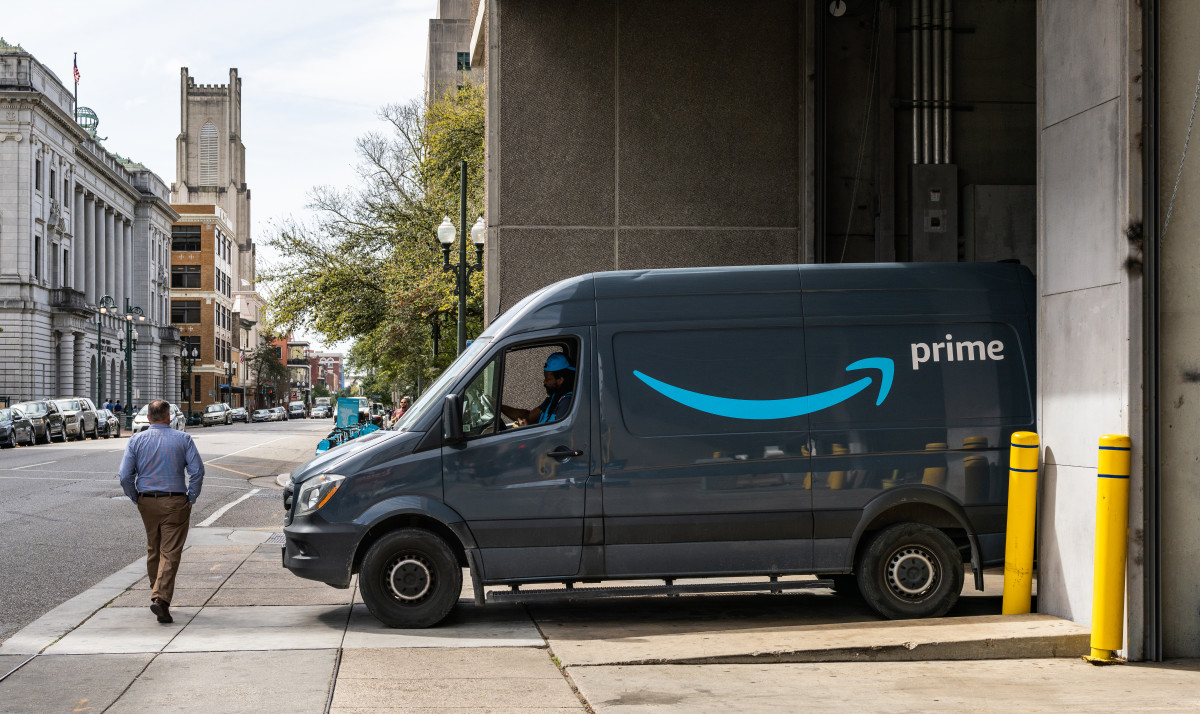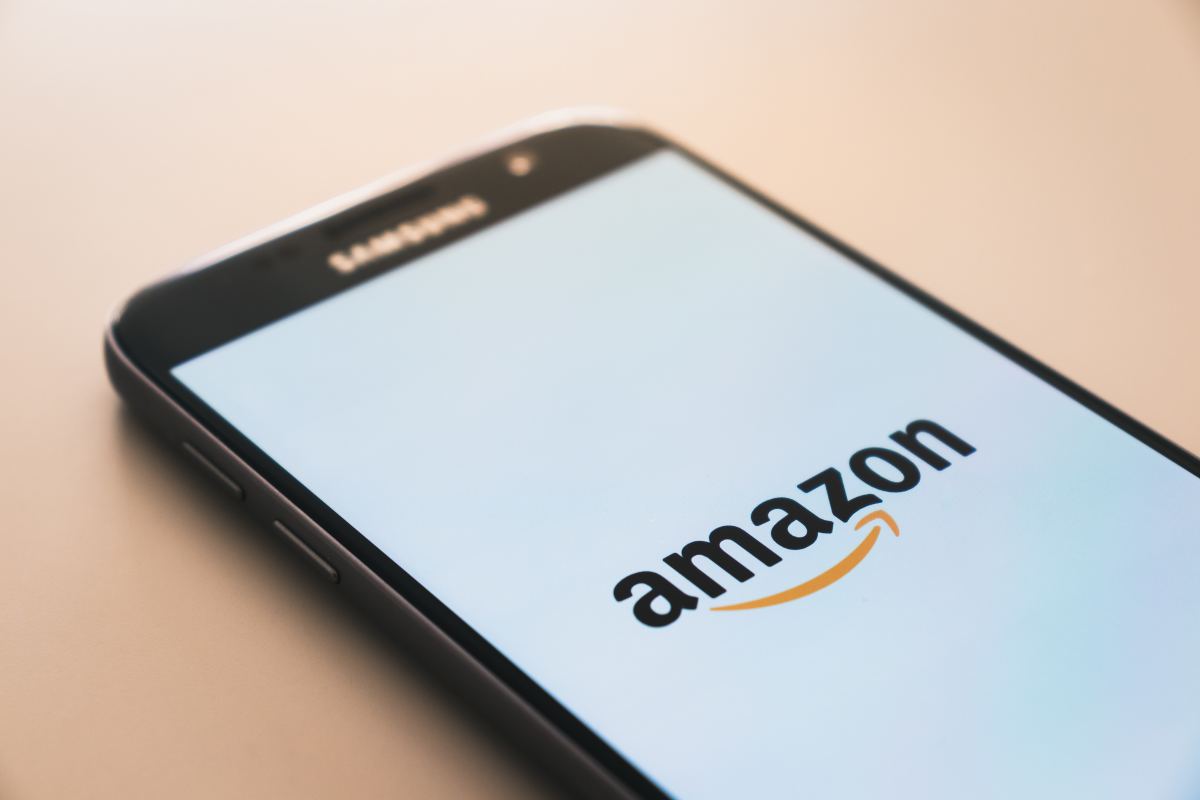
Love it or hate it, Amazon has grown to become America’s second-largest employer. The behemoth brainchild of polarizing billionaire Jeff Bezos began as an online bookstore but has since expanded its operations to include web services, robotics, media streaming, cloud computing, and more.
Perhaps the best-known arms of Amazon, though, are its online retail and grocery delivery businesses. And while the company has begun rolling out one-hour drone delivery in certain areas, the bulk of its deliveries still rely on real-life human drivers willing to tote packages and grocery bags from point A to point B.
Delivering for Amazon appeals to many job seekers, from those looking for immediate full-time work to the already-employed in need of a flexible side gig for extra income.
But just how much do Amazon delivery drivers make? How difficult is it to become one? And what do you have to do on the job?
The answer depends on what sort of delivery driver you become.
What are the 2 main types of Amazon delivery driver jobs?
There are actually two different types of Amazon delivery driver jobs, and they have different pay structures, benefits, scheduling norms, and requirements.
The type most consumers are probably familiar with are called Amazon Delivery Service Partner associates or DSP associates. These are the folks you see driving Amazon-branded Sprinter vans around residential neighborhoods dropping packages off on doorsteps and front porches from dawn until dusk.
The other designation is Amazon Flex driver. These are contractors who make deliveries out of their own vehicles using the Amazon Flex app during scheduling blocks they choose themselves, much like an Uber or DoorDash driver.
What is an Amazon DSP driver and how much do they make?
According to Amazon’s website, DSP associates (drivers) don’t actually work for Amazon directly — they work for individual Delivery Service Providers, which are “independent businesses that partner with Amazon to deliver packages.” Nevertheless, DSP drivers drive Amazon-branded vans and are considered employees, not contractors. Here’s what we know about the job.
Wages
Amazon’s website states that DSP associates earn at least $20 per hour “at select stations.” That last bit comes with an asterisk, and the associated footnote simply reads “rates vary” — not particularly helpful.
While $20 per hour isn’t a bad starting rate for an entry-level position, actual pay varies significantly according to Indeed.com, which lists self-reported DSP associate wages ranging from $9.60 to $32.20 per hour, with an average reported wage of $19.27.
As with most hourly positions, DSP drivers can expect to earn more in dense, urban areas like New York and San Francisco where the cost of living is higher than they would in, say, South Bend, Indiana, where the cost of living is well below the national average. Wages can also increase over time with experience.
Benefits
Because DSP associates are employees and not contractors, they are eligible for benefits. According to Amazon, full-time associates can expect health insurance and paid time off.
Third-party sources also report that drivers may be eligible for overtime and holiday pay as well as free training and skills development, which could eventually translate into higher-paying roles like operations manager, lead driver, or DSP owner.
In some cities, signing bonuses ranging from $1,000 to $3,000 may be offered to new drivers (in order to qualify, you cannot have worked for another DSP in the last 13 weeks).
Job requirements
According to Amazon’s website, a DSP associate’s job description looks something like this:
- Load and operate an Amazon-branded van.
- Deliver 200+ packages (ranging in size up to 50 lbs) per shift.
- Work 4–5 days per week, up to 10 hours per day, with shifts available in the morning, afternoon, weekday, and weekends.
- Interact with Amazon customers and the public in a professional and positive manner.
Downsides and complaints
Actual reports from current and former DSP drivers on Reddit paint a slightly less positive picture of the position than Amazon’s website. Some users reported having to urinate in their Amazon-issued water bottles while on the job in order to keep up with their delivery schedules, and others complained about a glitchy mapping and routing system that results in drivers passing stops, going in circles, and needing to perform frequent and difficult U-turns in their oversized vans.
According to many drivers, between getting in and out of the van’s high driver’s seat countless times per day and carrying large, heavy deliveries like cat litter, the job is very physically demanding. This can be a good thing for those trying to keep fit but may pose problems for those with injuries, ailments, or physical disabilities.

What is an Amazon Flex driver and how much do they make?
Amazon Flex offers a very different-looking opportunity to delivery for the retail giant. Flex drivers are independent contractors rather than employees, and they pick up and drop off deliveries using their own cars during flexible scheduling blocks they can sign up for ahead of time or on the day-of.
Deliveries can include Amazon packages, Prime Now deliveries (like groceries and household essentials), Amazon locker deliveries, and deliveries from local retailers that partner with Amazon. In most ways, Flex driving is a gig role much like those offered by companies like DoorDash, Lyft, and Instacart, but according to current and past drivers, it pays better.
Here’s what we know about the job:
Wages
Flex drivers are paid a flat sum for each delivery block, assuming they complete the block successfully. Additionally, some Prime Now Flex deliveries allow customers to tip, and drivers keep 100% of the tips they receive.
Amazon’s website states that “most drivers earn $18–$25 an hour,” making the pay somewhat comparable to the starting wage of a DSP driver. In a footnote, the website also includes the following caveat: “actual earnings will depend on your location, any tips you receive, how long it takes you to complete your deliveries, and other factors.”
Flex drivers are paid twice a week — on Tuesday and Friday — via direct deposit, so a valid bank account is required.
Benefits
Because Flex drivers are independent contractors and not employees, they do not receive typical workplace benefits like employer-sponsored health insurance or paid time off.
That being said, Amazon does provide all Flex drivers outside of New York a free Amazon Commercial Auto Insurance Policy. This is a supplementary policy (meaning drivers still need their own auto insurance) that includes the following:
- Auto liability coverage
- Uninsured motorist/under-insured motorist coverage
- Contingent comprehensive and collision coverage
Additionally, Flex drivers earn Amazon Flex Rewards points as they complete delivery blocks, and these points can be redeemed for cash back, preferred scheduling, discounts, and other perks.
Job requirements
According to Amazon’s website, prospective flex drivers must:
- Be at least 21 years old
- Possess a valid driver’s license
- Possess a four-door, mid-sized sedan or larger vehicle with up-to-date registration and insurance
- Pass a background check
Additionally, since Flex deliveries are facilitated through the Flex app, drivers must have a compatible smartphone (a relatively recent iPhone or Android) and a data plan from their service provider to run the app while making deliveries.
Drivers must also be able to physically load, unload, and deliver packages, although Flex drivers on Reddit report that deliveries rarely exceed 30 pounds.
Downsides and complaints
The most obvious cons of driving Flex include vehicular wear and tear and having to pay for your own gas. Some drivers have also reported racking up fines and tickets as a result of deliveries in inconvenient locations that lack legal parking options.
Another big downside is that, as an independent contractor, you are responsible for withholding your own tax payments as you go. Forget to do this, and it can be easy to come up short when it’s time to pay the IRS at the end of the year.
Depending on their region, some Flex drivers also complain that it can be difficult to secure delivery blocks consistently enough to provide a full-time income because there are many Flex drivers competing for a limited number of blocks. According to some, this is less of an issue in dense urban centers where delivery volume is high.
Which is better: Flex or DSP?
Amazon’s Flex and DSP driving programs both come with their pros and cons, and which is a better fit for you likely depends on your goals and priorities.
For someone seeking consistent pay, benefits, and the potential for upward mobility and increased compensation down the line, the DSP associate position might be a better fit. For someone who needs a high degree of flexibility, like a parent or an individual with another job, the Flex program is probably a more realistic option due to the ability to self-schedule.







